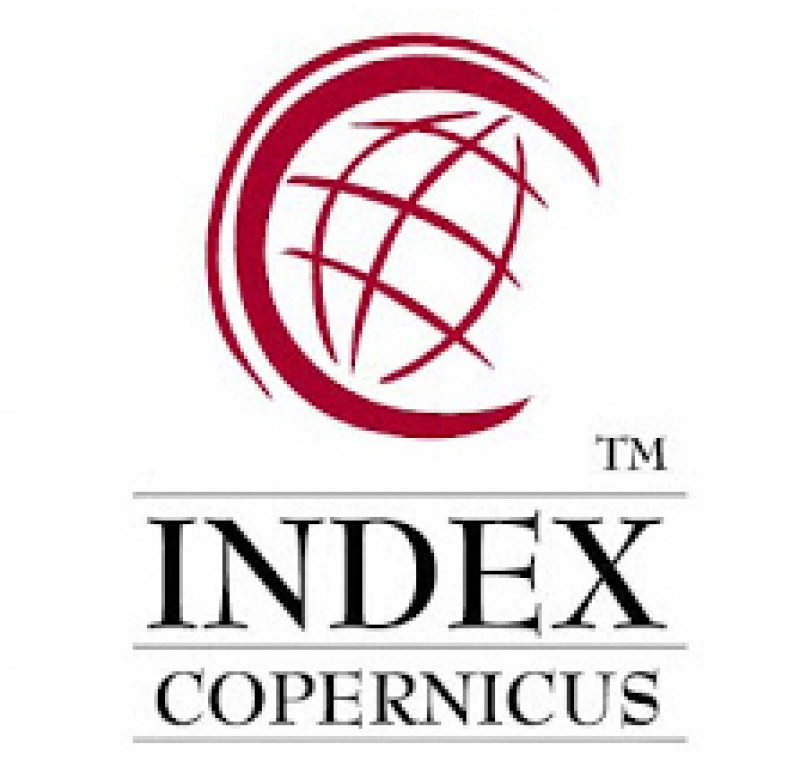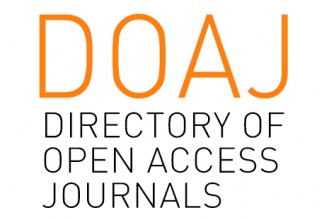Digital Didactical Design: Scratch Assisted Learning of Probability Materials in Junior High School
Abstract
The purpose of this research is to explore students' learning obstacles in learning junior high school probability materials as well as to describe the role of Scratch programming application in the Learning Trajectory of learning junior high school probability materials. The research method used is Didactical Design Research which consists of several main research stages, namely, (1) Didactical situation analysis (exploring learning obstacles and developing HLT); (2) Metapedactical analysis (HLT implementation); and (3) Retrospective analysis, to analyze the learning trajectory process owned by students. The research was conducted on grade VIII students in one of the private junior high schools in Yogyakarta. The research subjects for the learning obstacle exploration were students who had learned the material of probability, namely 27 students of grade IX. While the research subjects for the implementation of didactical design were 63 students of grade VIII. All research subjects came from one of the private junior high schools in Yogyakarta. The results of the study found the existence of student learning obstacles in the material of probability which are divided into 3 types namely ontogenic obstacles, epistemological obstacles, and didactical obstacles. The researcher developed HLT and mathematical task with Scratch for the learning of probability material. The results showed that the use of Scratch programming application can help students understand the concept of probability. Leaning trajectory generated in accordance with the results of restrospective analysis showed several stages of learning, namely, (1) Situational; (2) Referential; (3) General; and (4) Formal.
Keywords
Full Text:
PDFReferences
Armiati, Fauzan, A., Harisman, Y., & Sya’Bani, F. (2022). Local instructional theory of probability topics based on realistic mathematics education for eight-grade students. Journal on Mathematics Education, 13(4), 703–722. https://doi.org/10.22342/jme.v13i4.pp703-722.
Birgin, O., Gürbüz, R., Gurbuz, R., & Catlioglu, H. (2012). Determining eighth grade students’ understandings and difficulties of linear functions. In Energy Education Science and Technology Part B: Social and Educational Studies (Vol. 4, Issue 3). https://www.researchgate.net/publication/289090549.
Brandsæter, A. (2021). Programming in Mathematics Education: An Intermediary between the Real-World and the Mathematical Model. Programming as an Intermediary in Mathematics Education, 1–14. https://ntnuopen.ntnu.no/ntnu-xmlui/handle/11250/3032116%0Ahttps://ntnuopen.ntnu.no/ntnu-xmlui/bitstream/handle/11250/3032116/fulltext.pdf?sequence=1.
Bryant, Peter. (2012). Children’s understanding of probability : a literature review (summary report). Nuffield Foundation.
Cohen, L., Manion, L., & Morrison, K. (2017). Research methods in higher education. London: Routledge.
Fang, X., Ng, D. T. K., Tam, W. T., & Yuen, M. (2023). Integrating computational thinking into primary mathematics: A case study of fraction lessons with Scratch programming activities. Asian Journal for Mathematics Education, 2(2), 220–239. https://doi.org/10.1177/27527263231181963.
Forsström, S. E., & Kaufmann, O. T. (2018). A literature review exploring the use of programming in mathematics education. International Journal of Learning, Teaching and Educational Research, 17(12), 18–32. https://doi.org/10.26803/ijlter.17.12.2.
Iskrenovic-Momcilovic, O. (2020). Improving Geometry Teaching with Scratch. International Electronic Journal of Mathematics Education, 15(2). https://doi.org/10.29333/iejme/7807
Kennedy, L. M., Tipps, Steven., & Johnson, A. (2008). Guiding children’s learning of mathematics. Thomson Higher Education.
Koparan, T., & Rodríguez-Alveal, F. (2022). Probabilistic thinking in prospective teachers from the use of TinkerPlots for simulation: Hat problem. Journal of Pedagogical Research, 6(5), 1–16. https://doi.org/10.33902/JPR.202217461.
Leonard, L., Suhendri, H., Hasbullah, H., Mevianti, A., & Puteri, N. C. (2022). Identifikasi Materi Yang Dianggap Sulit Untuk Pelajaran Matematika Pada Jenjang Smp Kelas 8. Jurnal Lebesgue : Jurnal Ilmiah Pendidikan Matematika, Matematika Dan Statistika, 3(3), 560–567. https://doi.org/10.46306/lb.v3i3.167.
Maharani, R. D., Dasari, D., & Nurlaelah, E. (2022). ANALISIS HAMBATAN BELAJAR (LEARNING OBSTACLE) SISWA SMP PADA MATERI PELUANG. AKSIOMA: Jurnal Program Studi Pendidikan Matematika. https://api.semanticscholar.org/CorpusID:255646285.
Owusu, F., Afutu, R., Assan-Donkoh, I., Atepor, S., & Kwakye, D. O. (2022). Use of Probability Theory and Its Perspectives. Asian Journal of Probability and Statistics, 1–5. https://doi.org/10.9734/ajpas/2022/v19i130458.
Paparistodemou, E., Aria Meletiou-Mavrotheris, M., Vasou, C., & Meletiou-Mavrotheris, Μ. (2017). Insights from students’ reasoning about probability when they design their own Scratch games. http://scratch.mit.edu/.
Paul, M., & Hlanganipai, N. (2014). The nature of misconceptions and cognitive obstacles faced by secondary school mathematics students in understanding probability: A case study of selected Polokwane secondary schools. Mediterranean Journal of Social Sciences, 5(8), 446–455. https://doi.org/10.5901/mjss.2014.v5n8p446.
Rahayu, T., Rohana, & Fuadiah, N. F. (2021). HYPOTHETICAL LEARNING TRAJECTORY PADA PEMBELAJARAN PELUANG SMP MENGGUNAKAN KONTEKS PERMAINAN TEPUK GAMBAR. Jurnal Didaktis Indonesia, 1(2), 116–125.
Rahmi, F., Sampoerno, P. D., & Ambarwati, L. (2020). Probability learning trajectory: Students’ emerging relational understanding of probability through ratio. Journal of Physics: Conference Series, 1470(1). https://doi.org/10.1088/1742-6596/1470/1/012067.
Romdhani, W., & Suryadi, D. (2016). Desain didaktis konsep pecahan untuk kelas iii sekolah dasar. EduHumaniora| Jurnal Pendidikan Dasar Kampus Cibiru, 8(2), 198-210.
Rosita, C. D., Nopriana, T., & Silvia, I. (2019). Design of learning materials on circle based on mathematical communication. Infinity Journal, 8(1), 87-98.
Sari, A. D., Suryadi, D., & Dasari, D. (2024). Learning obstacle of probability learning based on the probabilistic thinking level. In Journal on Mathematics Education (Vol. 15, Issue 1, pp. 207–226). Sriwijaya University. https://doi.org/10.22342/jme.v15i1.pp207-226.
Sari, N. (2022). Development Mathematics Realistic Education Worksheet Based on Ethnomathematics in Elementary School. Phenomenon : Jurnal Pendidikan MIPA, 12(1), 77–89. https://doi.org/10.21580/phen.2022.12.1.10853.
Sezgin Memnun, D., Ozbilen, O., & Dinc, E. (2019). A Qualitative Research on the Difficulties and Failures about Probability Concepts of High School Students. Journal of Educational Issues, 5(1), 1. https://doi.org/10.5296/jei.v5i1.14146.
Smith, G. (1998). Introduction to statistical reasoning. McGraw-Hill Science, Engineering & Mathematics.
Suryadi, D. (2010). MENCIPTAKAN PROSES BELAJAR AKTIF. Seminar Pendidikan Matematika.
Suryadi, D. (2019). Landasan Perancangan Penelitian Desain Didaktis (DDR). Universitas Pendidikan Indonesia, 43–58.
Van de Walle, J. A., Karp, K. S., Bay-Williams, J. M., Wray, J. A., & Brown, E. T. (2020). Elementary and middle school mathematics : teaching developmentally.
Wijaya, A., Elmaini, & Doorman, M. (2021). A learning trajectory for probability: A case of game-based learning. Journal on Mathematics Education, 12(1), 1–16. https://doi.org/10.22342/JME.12.1.12836.1-16.
Yusuf, M., Rahim, S. S. A., & Eu, L. K. (2021). Obstacles Faced by College Students in Solving Probability Word Problems. Mathematics Education Journal, 15(1), 83–90. https://doi.org/10.22342/jpm.15.1.12801.83-90.
DOI: http://dx.doi.org/10.18415/ijmmu.v11i12.6505
Refbacks
- There are currently no refbacks.
Copyright (c) 2024 International Journal of Multicultural and Multireligious Understanding

This work is licensed under a Creative Commons Attribution-NonCommercial-NoDerivatives 4.0 International License.
https://ijmmu.com
editor@ijmmu.com
facebook.com/ijmmu
Copyright © 2014-2018 IJMMU. All rights reserved.



































